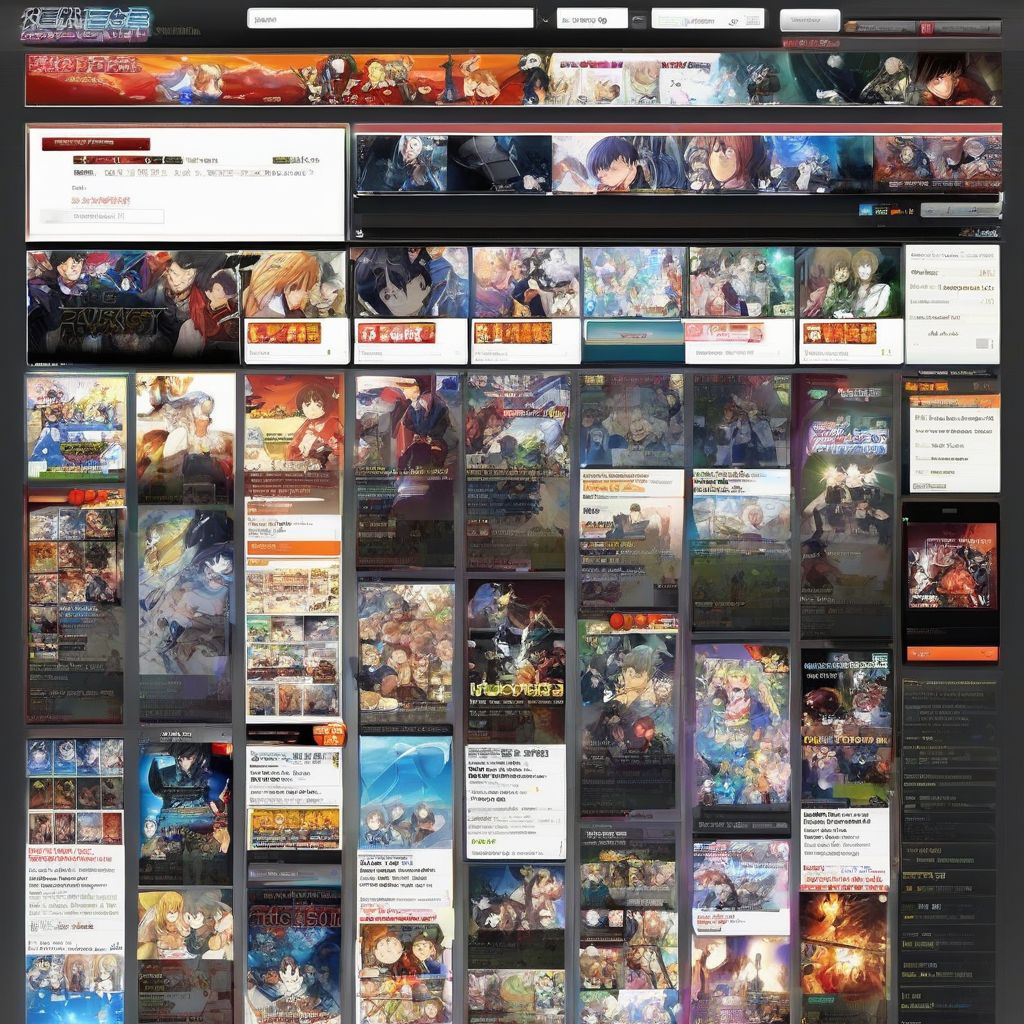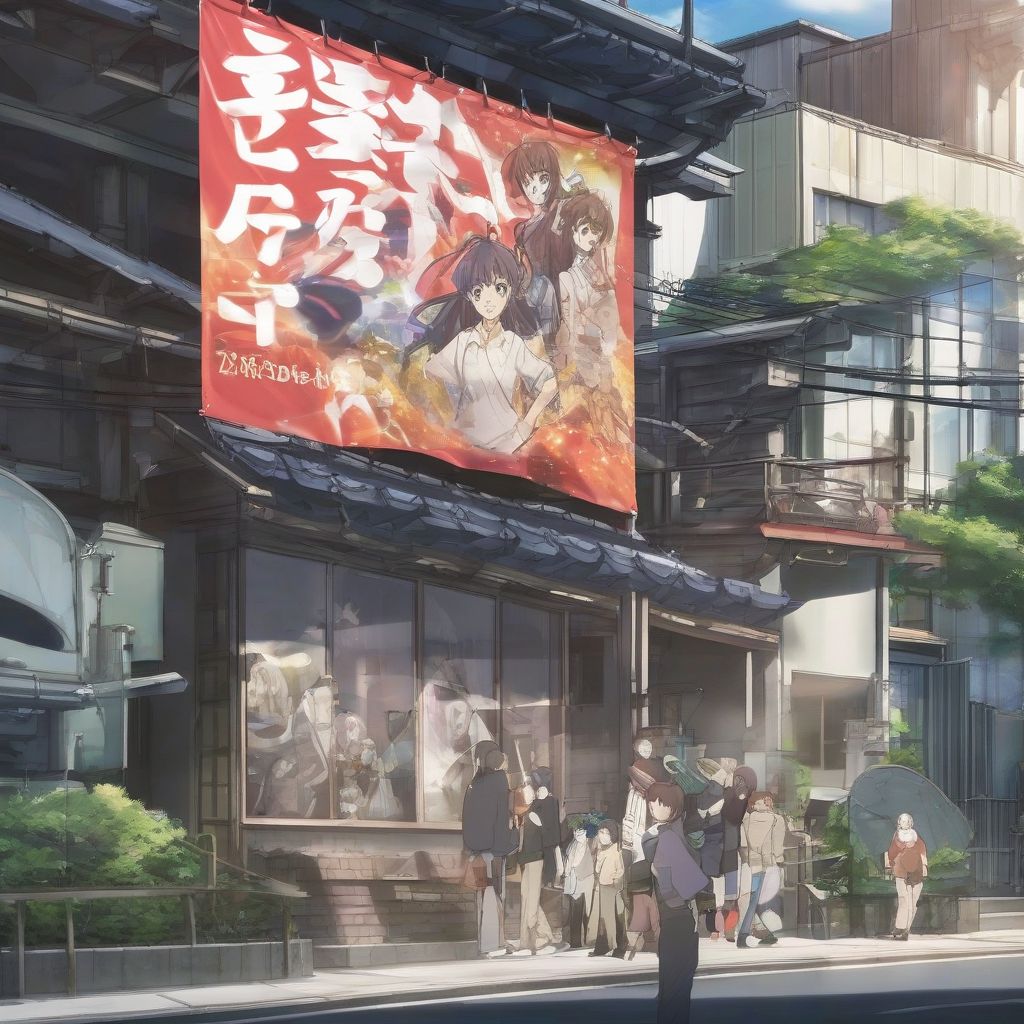Have you ever started watching an anime, excited for the story, only to be completely thrown off by choppy animation or awkward character designs? We’ve all been there. While a captivating plot and relatable characters are essential, there’s no denying that animation quality plays a significant role in how we perceive and review anime. It’s the visual storytelling medium that can either elevate a good story to greatness or leave viewers feeling like something is missing.
Beyond Pretty Pictures: Why Animation Matters
Sure, a visually stunning anime with breathtaking landscapes and fluid fight scenes is a treat for the eyes. But animation is much more than just aesthetics—it’s a powerful tool that contributes to the overall storytelling experience. Here’s how:
Setting the Mood and Atmosphere
Imagine watching a horror anime with bright, cheerful colors and bouncy movements—it just wouldn’t feel right! Animation sets the tone and atmosphere, drawing viewers into the world of the story. Darker color palettes and sharper lines can create a sense of mystery and suspense, while vibrant hues and softer edges evoke feelings of joy and whimsy.
Breathing Life into Characters
From expressive eyes to subtle gestures, animation breathes life into characters and makes them feel real. Think about how much personality is conveyed through the way a character moves, their facial expressions, and even their quirks. Good animation can make us laugh with a character, cry with them, and truly connect with their emotions.
Dynamic Storytelling and Action Sequences
Ever watched an anime fight scene that left you on the edge of your seat? Fluid animation and dynamic camera angles can transform a simple fight into an exhilarating spectacle. Whether it’s the clash of swords or the emotional intensity of a conversation, good animation elevates the storytelling and keeps us engaged.
The Critic’s Eye: How Animation Affects Reviews
 Anime Review Website
Anime Review Website
Anime reviews are subjective—what one person finds visually appealing, another might not. However, certain aspects of animation frequently influence how critics and fans evaluate and discuss anime:
Technical Prowess: Fluidity, Style, and Detail
- Animation Fluidity: Smooth, consistent animation creates a more immersive experience, especially during action sequences. Reviews often highlight when an anime excels in this area, praising its “sakuga” (moments of exceptional animation).
- Art Style: From the classic look of Studio Ghibli to the experimental styles of more independent studios, the art style helps establish the anime’s identity. Reviews often discuss whether the art style effectively complements the story and characters.
- Attention to Detail: Whether it’s the intricate designs of a fantasy world or the subtle expressions of a character’s face, attention to detail shows care and adds depth to the viewing experience. Reviews often point out these details, demonstrating the anime’s overall quality.
Consistency: The Key to Avoiding Criticism
One of the most common criticisms leveled at anime is inconsistency in animation. This can range from minor dips in quality between episodes to jarring shifts that pull viewers out of the story. These inconsistencies often stem from budget constraints, tight production schedules, or a studio’s experience level. Reviews are quick to point out these inconsistencies, as they can significantly impact the viewing experience.
When Low-Budget Shines: Storytelling over Spectacle
It’s important to note that stunning animation isn’t a prerequisite for a great anime. Many critically acclaimed anime prioritize storytelling and character development over visual extravagance. Reviews often acknowledge and praise anime that succeed in delivering compelling narratives, even with limited animation budgets.
The Bigger Picture: Animation’s Impact on the Anime Industry
 Anime Studio Building
Anime Studio Building
The role of animation quality extends beyond individual anime reviews—it influences the industry as a whole.
- Studio Reputation: Studios known for their consistently high-quality animation often attract a dedicated following. A studio’s track record can influence anticipation for upcoming projects and impact their overall success.
- International Appeal: Striking visuals can make anime more accessible to a wider audience, even those unfamiliar with the medium. Visually impressive anime often serve as a gateway for newcomers, introducing them to the world of Japanese animation.
- Evolving Expectations: As technology advances and animation techniques evolve, audiences have come to expect increasingly sophisticated visuals. This pushes studios to innovate and experiment, further pushing the boundaries of what’s possible in anime.
The Final Verdict: A Vital Ingredient in the Anime Recipe
Animation quality is an integral aspect of the anime experience, influencing everything from reviews and industry trends to the overall enjoyment of the medium. While a captivating story and compelling characters are paramount, it’s the power of animation that brings these elements to life, immersing viewers in vibrant worlds and unforgettable stories.
What are your thoughts on the role of animation in anime? Have you ever been blown away by an anime’s visuals or found yourself distracted by inconsistencies? Share your experiences in the comments below!
And if you’re looking for more insights into the world of anime, check out our article on How to Introduce New Viewers to Anime Through Reviews.
[amazon bestseller=”Anime Art Books”]
